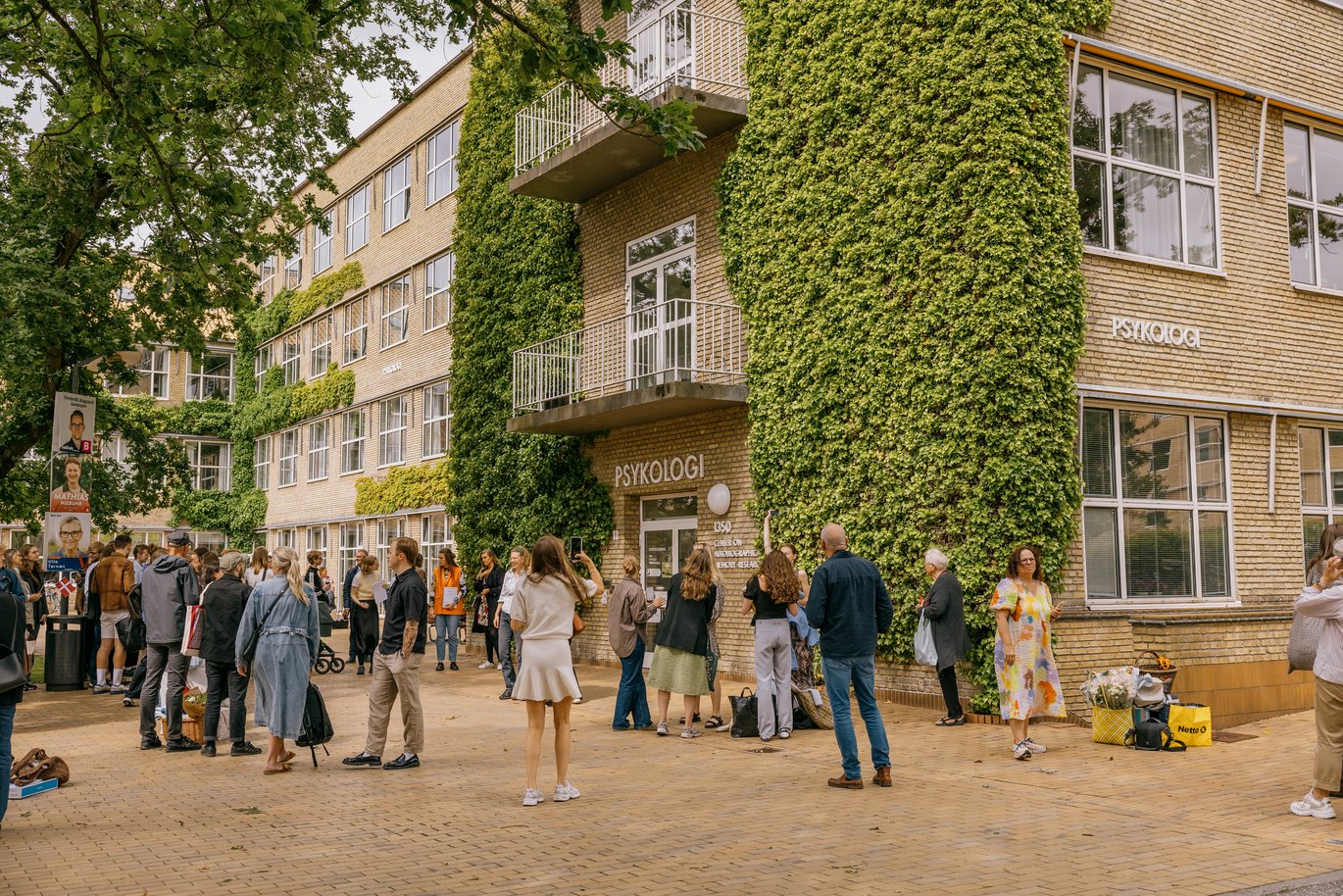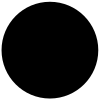The AU degree programmes with the most and the fewest applications
Get an overview of this year’s applications to AU’s degree programmes as Omnibus breaks down the numbers into top-10 lists and reviews the application figures for AU’s five faculties.

The application deadline for degree programmes was Saturday, which was also the deadline for quota 1 applications – and the total number of applications to AU’s programmes has now been tallied.
In total, AU received 31,024 applications, of which 11,736 were from applicants who listed an AU degree programme as their first choice. The number of applications is 7 per cent higher than in 2024, and if we look at first-choice applications, the figure is 6 per cent higher than last year.
Number of applications to AU increases by 7 per cent compared to last year
Aarhus BSS – by far the most applications
The faculty that received the most applications is Aarhus BSS with 12,212 applications, of which 4,728 are first-choice applications. Both figures show a 5 per cent increase compared to last year.
Aarhus BSS also offers the programme that has received the most first-choice applications: Psychology. This year, Aarhus BSS offers 11 Bachelor's degree programmes, two of which are offered in both Aarhus and Herning.
Arts – the most degree programmes, including the one with the fewest first-choice applications
Arts received the second highest number of applications overall, namely 6,078 applications, of which 2,210 are first priority applications. Both of these figures are 3 per cent lower than last year.
Arts is the faculty at AU that offers the most bachelor's programmes. This year, the faculty offers 33 bachelor's programmes, including Education Studies, which is offered in both Copenhagen and Aarhus.
This year, Arts also offers the programme that received the fewest first-choice applications, namely French Language, Literature and Culture, which received only four first-choice applications.
Health – the most popular degree programme
This year, Health offers five Bachelor's degree programmes and one professional Bachelor's degree programme (Clinical dental technique), and the six programmes have received a total of 4,821 applications. Of these, 1,916 are first-choice applications. Looking at the total number of applications, the figure remains unchanged, but there has been a slight decline of 1 per cent in the amount of first-choice applications.
Two programmes in particular attract many applicants: Medicine (summer and winter intake), which is the programme that has received the most applications at AU overall, and odontology (dentistry degree programme).
Natural Sciences – the biggest increase this year
This year, Natural Sciences received a total of 4,043 applications, of which 1,326 were first-choice applications. Although it only ranks fourth at AU compared to the other faculties, the faculty accounts for the largest percentage increase this year. The faculty has received 67 per cent more applications overall compared to last year, and for first-choice applications, the figure is 62 per cent.
The significant increase is primarily due to the three new English-language programmes in Computer Science, Data Science and IT-Product Development, which are being offered for the first time this year. In total, Natural Sciences offers 15 Bachelor's programmes.
Technical Sciences – status quo and greatest decline
Technical Sciences has received a total of 3,870 applications, of which 1,556 are first-choice applications. Looking at the total number of applications, the figures are more or less unchanged from last year. However, there has been a 2% decline in first-priority applications.
This year, the faculty offers 20 programmes, comprising 17 engineering programmes offered in Herning and Aarhus and three agricultural programmes offered in Viborg. While several engineering programmes are experiencing growth, Plant and Food Science is seeing the largest decline in total applications for the year. The programme was offered for the first time last year and received 33 applications, five of which were first-choice applications. This year, the programme received 18 applications, six of which were first-choice applications.
This year’s applicants will be notified on Monday 28 July whether they have been offered a place in a higher education programme.
Top 10: Most applications overall
- Medicine (summer and winter intake), 2,613 applications
- Psychology, 2,473 applications
- Law, 1,883 applications
- Economics and Business Administration, 1,883 applications
- BSc in Economics and Business Administration, 1,799 applications
- Political Science, 1,083 applications
- Dentistry, 1,006 applications
- Cognitive Science, 859 applications
- Business Administration and Commercial Law, 805 applications
- Cognitive Science, 787 applications
Top 10: Most first-choice applications
- Psychology, 1,119 applications
- Medicine (summer and winter intake), 986 applications
- BSc in Economics and Business Administration, 924 applications
- Law, 782 applications
- Economics and Business Administration, 744 applications
- Odontology, 472 applications
- Cognitive science, 424 applications
- Political Science, 420 applications
- Computer Science, 358 applications
- Dental Hygiene, 248 applications
Top 10: Fewest first-choice applications
- French Language, Literature and Culture, 4 (31 applications in total)
- Plant and Food Science, 6 (18 applications in total)
- Classical Philology, 7 (31 applications in total)
- Russian Studies, 9 (28 applications in total)
- Classical Archaeology, 9 (44 applications in total)
- Electronics (winter intake), 10 (38 applications in total)
- International Business Communication in French, 11 (26 applications in total)
- China Studies, 12 (41 applications in total)
- German Language, Literature and Culture, 14 (54 applications in total)
- Arabic and Islamic Studies, 16 (40 applications in total)
Source: Final figures for applications to Aarhus University 2025, KOT/Aarhus University (Danish)
Top 10: Biggest increase
Programmes with the highest percentage increase in total applications compared to last year
- Electrical engineering, 49 per cent (from 77 to 115 applications)
- Electrical Energy Technology (Herning), 41 per cent (from 58 to 82 applications)
- Mechanical Engineering (winter intake), 40 per cent (from 58 to 81 applications)
- Construction, 29 per cent (from 133 to 172 applications)
- Social Science, 26 percent (from 263 to 331 applications)
- Chemical Engineering (Bachelor of Engineering), 25 per cent (from 89 to 111 applications)
- Health Technology Engineer, 24 per cent (from 176 to 218 applications)
- Professional Bachelor's degree programme, clinical dental technique 23 per cent (from 163 to 200 applications)
- Education Studies (Aarhus), 20 per cent (from 314 to 378 applications)
- Biology, 18 per cent (from 303 to 359 applications)
Business Administration and Commercial Law 18 percent (from 684 to 805 applications)
The Study of Religion, 18 per cent (from 96 to 113 applications)
Electrical Energy Technology, 18 per cent (from 92 to 109 applications)
Top 10: Biggest decline
Programmes with the highest percentage increase in total applications compared to last year
- Plant and Food Science, -45 per cent (from 33 to 18 applications)
- French Language, Literature and Culture, -30 per cent (44 applications in total)
- Veterinary Medicine (veterinarian), -27 per cent (from 693 to 507 applications)
- Software Technology, -24 per cent (from 116 to 88 applications)
- Classical Archaeology, -21 per cent (from 56 to 44 applications)
- Information Studies, -20 per cent (from 326 to 262 applications)
- Spanish and Spanish-American Language, Literature and Culture, -19 per cent (from 73 to 59 applications)
Architectural Engineering (winter intake), -19 per cent (from 99 to 80 applications) - Comparative Literature, -16 per cent (from 164 to 137 applications)
- Musicology, -14 per cent (from 84 to 72 applications)
International Business Communication in German, -14 per cent (from 50 to 43 applications) - Educational Science (Copenhagen), -11 per cent (from 140 to 124 applications)
Musicology, -11 per cent (from 203 to 180 applications)
Philosophy, -11 per cent (from 197 to 175 applications)
Source: Final figures for applications to Aarhus University 2025, KOT/Aarhus University (Danish)
This text is machine translated and post-edited by Cecillia Jensen

